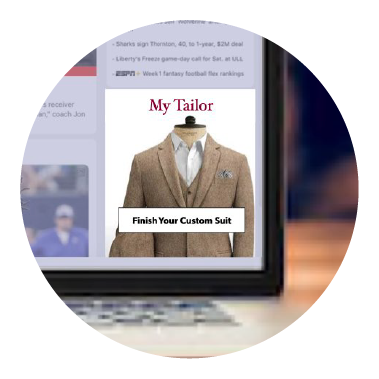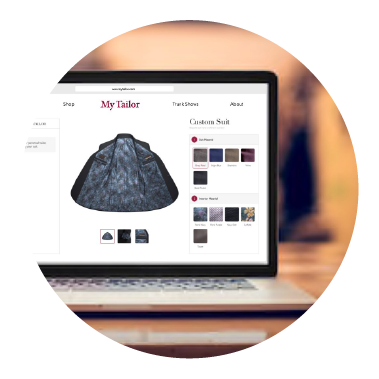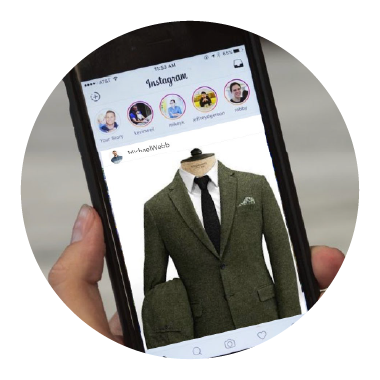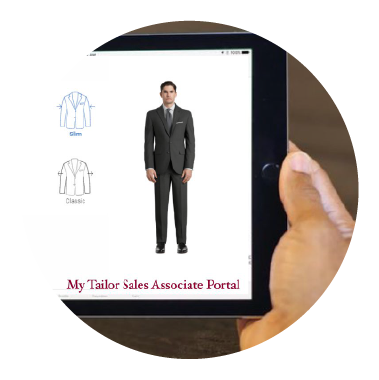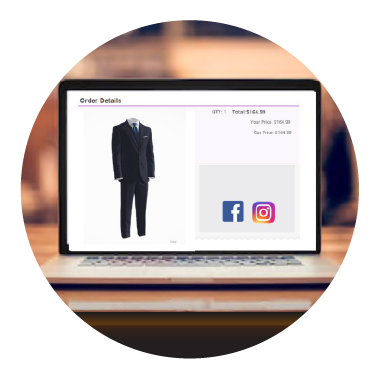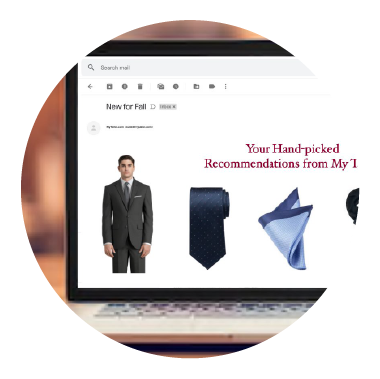Higher engagement and time spent on your website means greater visibility on search engines, which means more site visitors. Our client Lindsey Scoggins saw a 26% increase in site visitors within four weeks of launching their engagement ring configurator.
Research shows that the shopping trends of COVID-19, namely a shift to online commerce, are likely to persist well after the pandemic is behind us. One way brands can adapt to the evolving eCommerce landscape is by embracing novel technologies such as 3D and augmented reality which have a number of benefits for shoppers and businesses alike. Read on to learn more about evolving consumer expectations and preferences in a post-COVID world.
Consumer Shopping in the New World
Our research shows that a post-COVID world is likely to be focused on eCommerce, visual content, and higher customer expectations, to boot.
A Shift to eCommerce
Threekit created the Virtual Shopping Index (VSI) on March 27, 2020, as a way to monitor the COVID-19 crisis and its impact on commerce in our newly remote world. The VSI measures the dependency of shoppers on eCommerce. The data from the VSI shows that people are increasingly dependent on eCommerce for both essential and nonessential goods. Sectors that have experienced a dramatic increase from the pandemic’s start to April 2021 include:
- Automotive
- Appliances
- Furniture
- Sporting Goods
- Jewelry
- Hardware
- Electronics
- Apparel and Shoes

Our VSI projections currently show an 80%/20% split between in-store and eComm sales.
eCommerce only made up 3% of grocery sales as of January 1, 2020. Furthermore, as Salesforce reports, digital shoppers in Q2 2020 were the most intentional on record, ready to buy on digital channels. These short-term trends may be predictive of a long-term shift to online shopping. For example, in our research, we found that 55% of online grocery shoppers are more likely to buy groceries online, even after the pandemic. eCommerce continues to thrive even as brick-and-mortar shopping returns. In fact, Salesforce writes that people prefer contactless delivery options and "buy online and pick up in store" (BOPIS).
The Importance of Visual Content and “The Visual Economy”
As a result of the shift to online sales, brands and businesses are seeking to upgrade their websites to stay relevant. Visual content is a large part of this upgrade, as humans respond 60,000 times faster to images than to text. It’s often said that a picture is worth a thousand words, and this could not be more true in the eCommerce space. As the digital eCommerce space grows, visual content has become more important. New online experiences championed by retailers include interactive and configurable 3D product experiences; a Virtual Photographer to replace cancelled photoshoots for one’s products; and augmented reality tools to boost buyer confidence.
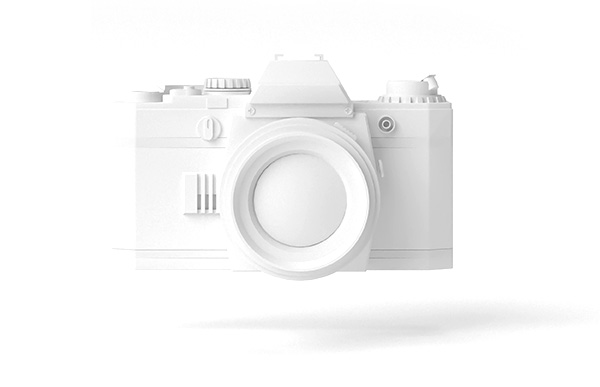
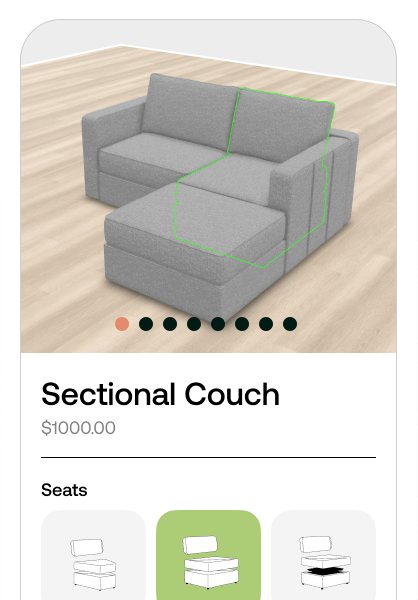
Higher Customer Expectations
Customers have greater expectations in an entirely-digital world. They want more visuals: our research on The Visual Economy shows that they prefer at least 8 images per product page. Approximately two-thirds of shoppers want 3D or augmented reality in the shopping experience (e.g., to preview different makeup colors and how they might look on one’s face, or to see what different couches might look like in one’s house).
Retailers are quickly learning that personalized experiences are key to driving sales. That’s because, as McKinsey & Co. notes, “customers expect a personalized experience when shopping.” Core elements of a personalized shopping experience, according to McKinsey, include: data about the customer, including consumer segmentation and analytics; a decision playbook that matches customers with content and campaigns, and coordinates multichannel distribution of such to them; design, both in leadership and deployment of campaigns and content; and distribution via technology and marketing analytics for best results.
Creating the Best eCommerce Experience Possible with 3D and Augmented Reality (AR) Technology
As we’ve just discussed, the shift toward online-only shopping makes it important for brands to direct their efforts and spending to create the best eCommerce experience possible. More and better visuals are key, as is real-time customization: letting customers create the product they want, and allowing them to buy in real time via 3D configuration.
The Suit Hunt Begins
Mike Searches "custom suit" and clicks on Mytailor.com
When he arrives at the site, he opts into a bespoke experience where he can answer a few questions and start receiving suggestions on the look he wants to achieve.
Still, he's not sure what he wants yet and he's a little late for a meeting. He abandons the page.

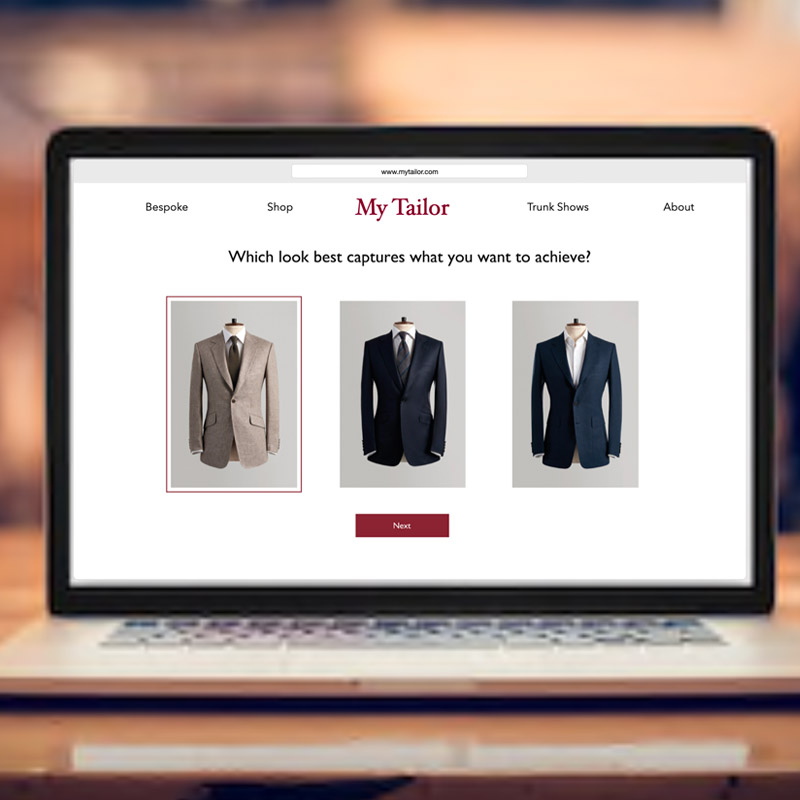
A Relevant Reminder
The following day, Mike is on his favorite news site and sees a My Tailor ad with the exact same style suit he’d been looking at the day before. He clicks on it to continue shopping

An Online Guided Selling Experience
When he clicks from the ad, Mike is taken directly to the custom suit experience where he continues to make adjustments. An online sales associate then joins him to select fabric and lining to build on his suit style. While he’s closer to making a decision, he’s not quite ready to buy. Luckily, MyTailor.com can save the updates he’s made so they’re always available to him.
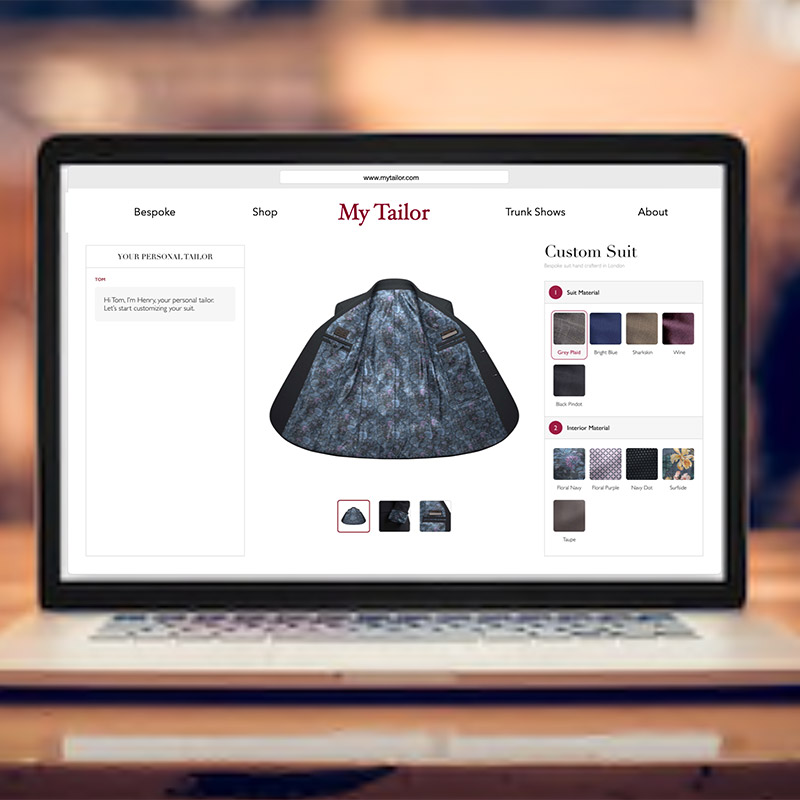
Social Surround Sound
While he’s scrolling through his Instagram feed, he gets an ad from MyTailor.com that features the suit he’s been configuring. Same thing when he’s on Facebook. He’s finally convinced…but wants to visit the local My Tailor shop to make the purchase.
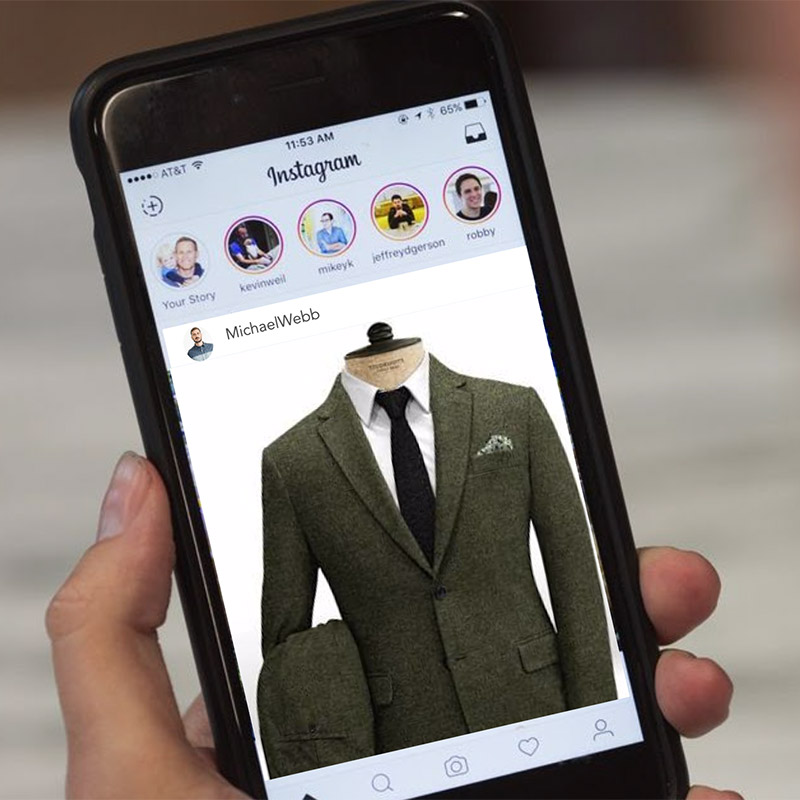
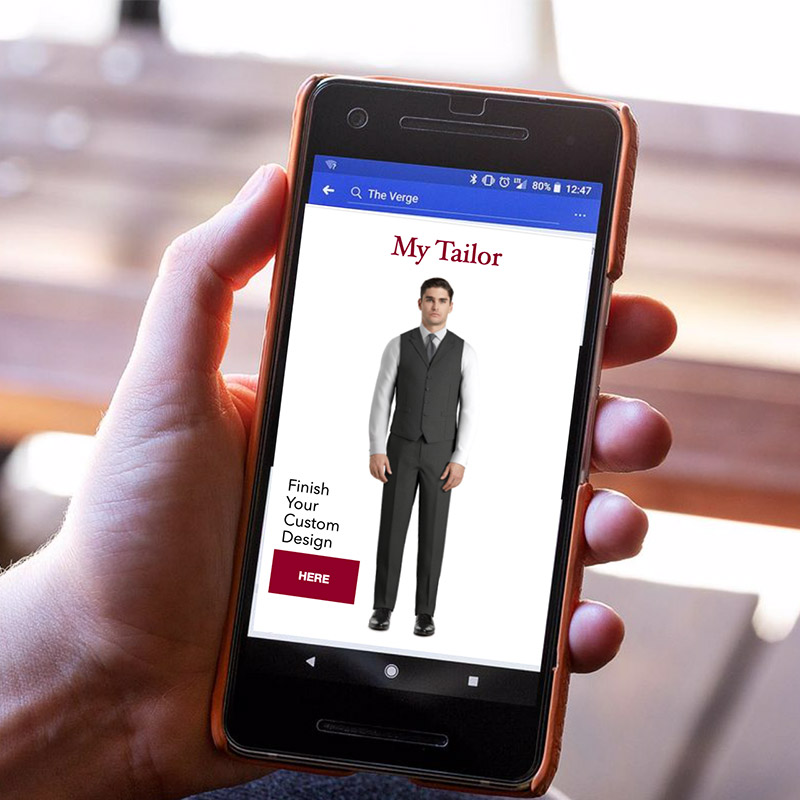
Connecting Digital to In-Store
When Mike goes to My Tailor, the sales associate is easily able to pull up his account and the suit he’s been working to customize. The add the finishing touches together.
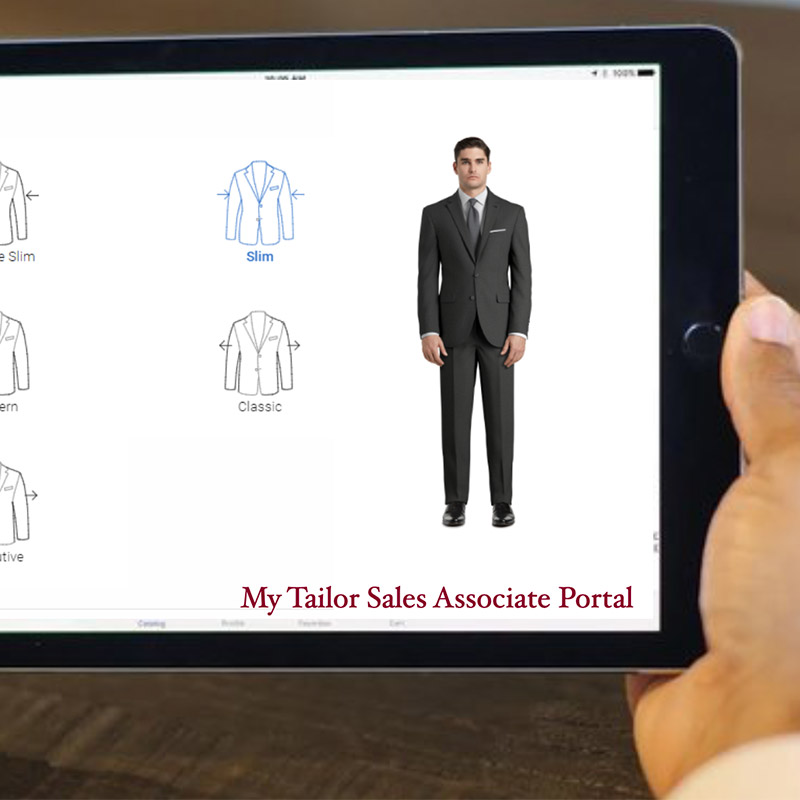
A Personlized Purchase
Even though it hasn’t been manufactured yet, Mike receives a full mock-up of his custom suit in his digital receipt. He can even share it with his network on social media.
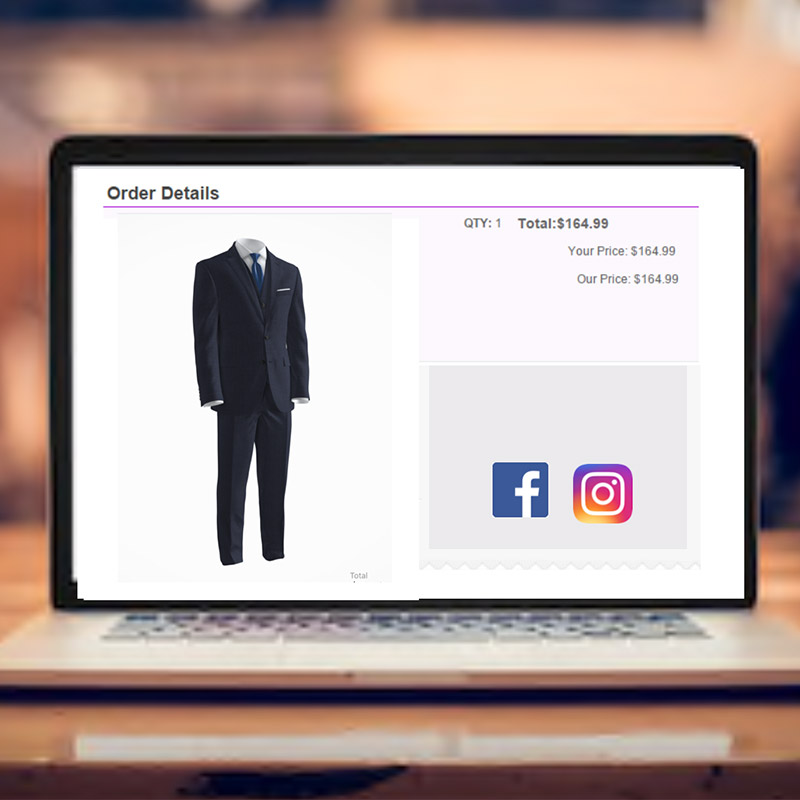
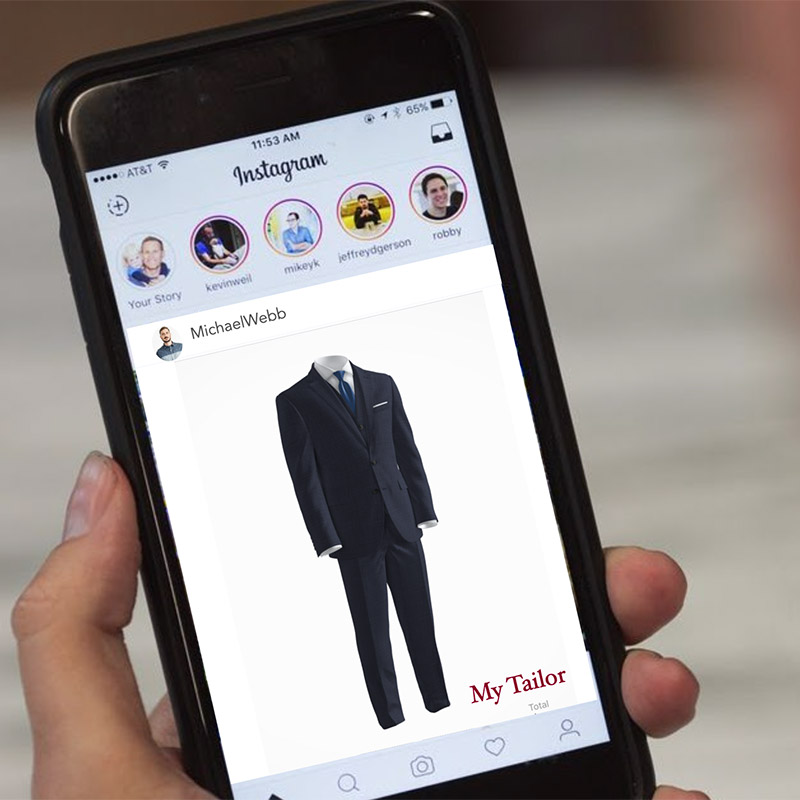
Building the Relationship
Because My Tailor has data on Mike’s style and color preferences, they regularly send personalized recommendations, complete with monogramming.
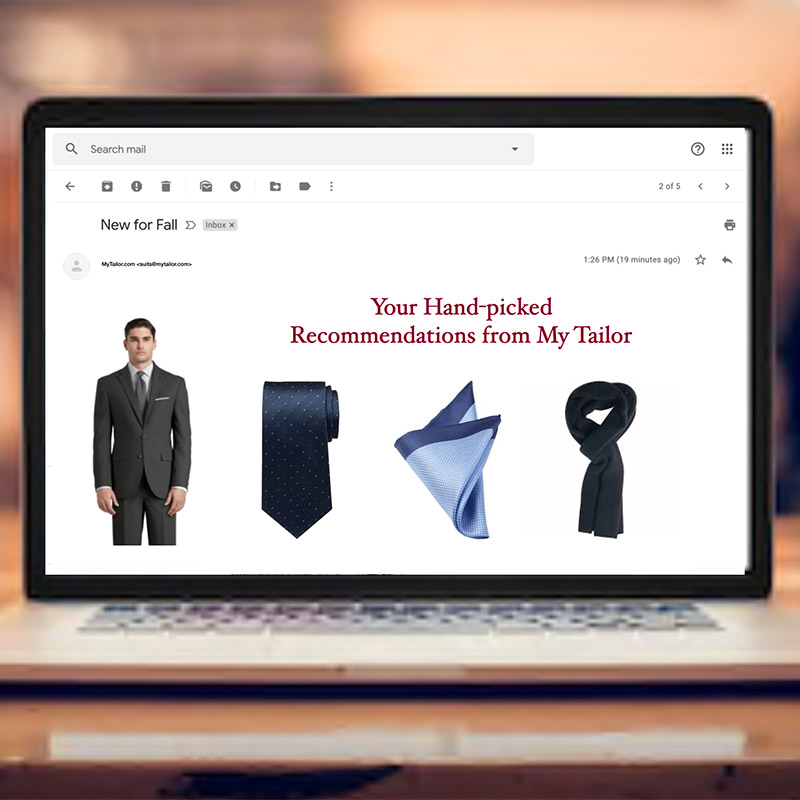
The New Customer Journey
Here, we’ll show the new customer journey through the case of a person shopping for a custom, made-to-order suit. But truth be told, you should be able to see how this could play out for any custom consumer good – from a sofa, to an engagement ring, even a car.
This is Mike.
He’s shopping for a new suit.Scroll and click on each image to see how dynamic 3D visuals play a role, every step of the way.
Journey Stages
Both the products themselves and customer experience should be customized for best results.
Shoppers want to personalize products, but they also want an experience that feels like it was custom-made for them. Stores can suggest items that shoppers would want based on shopping history. Augmented reality or AR can also help improve customization and personalization of the shopping experience.
AR is no longer the future – the technology is here and already used on many eCommerce websites. You can use AR straight from the web, with no special apps necessary. Apple, Facebook, and Google are all investing in AR heavily.
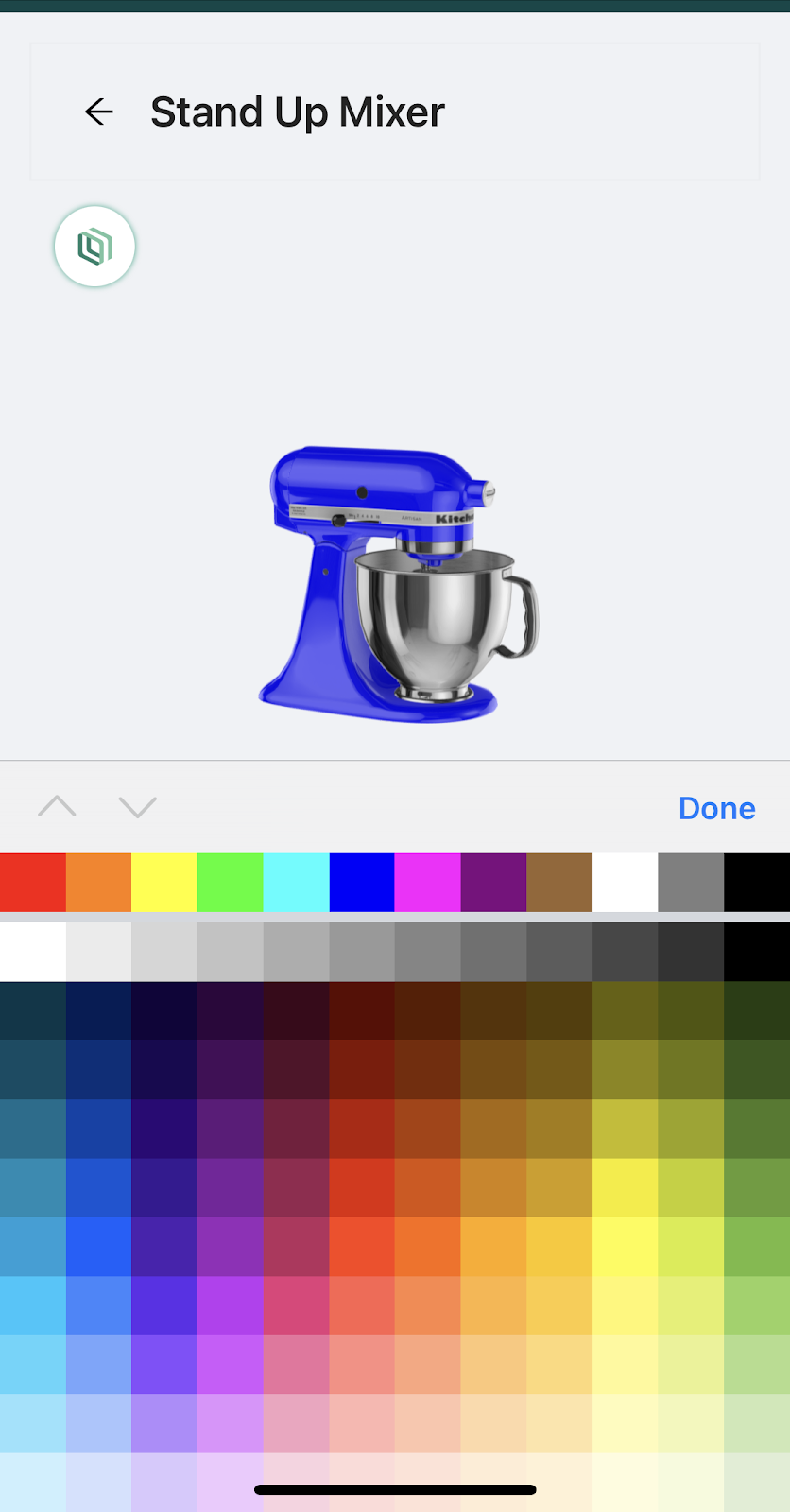
The New Retail Experience, Powered by 3D and AR Technology
Brands can deliver the best retail experience possible by leveraging 3D and AR product visualization. What does that look like? While the possibilities of 3D are fun to imagine, it’s best brought to life through a real example that shows how this technology will streamline the customer experience.
Benefits of 3D and AR Go Beyond Better Customer Experience
When 3D and AR define the new customer journey, the experience is interactive and engaging. However, the benefits of these technologies go beyond customer experience. Investing in customer experience via AR and 3D also helps the company’s bottom line.
ThreeKit works with many companies including Crate&Barrel, Hewlett Packard, Ciroc, Steelcase, and others to improve online customer experience. These customers have found that the website upgrade actually improves business. A few examples: BOSTONTec saw a 30% increase in quote requests; Custom Fantasy Rings was able to eliminate their entire photography costs by using 3D visualization and AR; Tailored Brands saw customers’ average order value increase by 30%.
More site visitors, increased interest from shoppers, reductions to drawing and photography budgets, and a boost in online purchasing are some of the results that ThreeKit’s clients have reported.
The benefits of 3D and AR include:
Increase in web traffic
Cost savings with greater engagement
When you use 3D or Virtual Photography, you can eliminate the cost of traditional photoshoots and get results a lot quicker. And, according to Google, the engagement rate of 3D ads is three times higher than standard display or rich media ads, and leads to nearly sevenfold increase in purchase intent, and a nearly fivefold increase in brand favorability.
Higher conversion and attachment rate
When customers can create products to their specifications in real time, this boosts their confidence and makes them more likely to buy. J. Press, a made-to-order shirt company, sold three times more shirts in six months than they had over the previous 18 months thanks to a web interface that allowed them to customize products in real time. Lovesac experienced a 15% increase in purchases of accessories and add-ons for their couches since the launch of their online configurator.
The data could not be more clear:
Shifting eCommerce sites to interactive, 3D- and AR-based experiences not only improves customer experience but also drives sales. Digital shoppers are more intentional than ever, and they are looking for confirmation that they are buying the right product.
3D and AR technologies add value to the shopping experience, and 42% of shoppers polled said they would pay more for a product if they could see it in 3D/AR. This technology can help shoppers gain key insights that they can use to gain confidence in products and make the best decisions. As such, it’s essential to leverage 3D/AR technologies. Personalized shopping experiences are slowly becoming the future of shopping, becoming more appealing to younger shoppers such as Gen Z and millennials.

